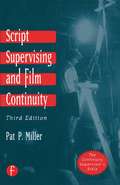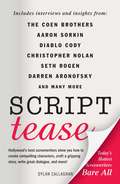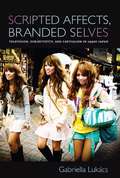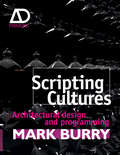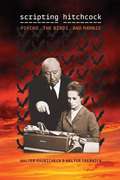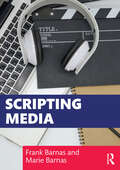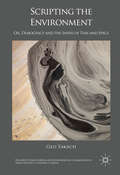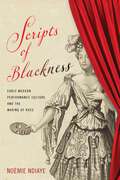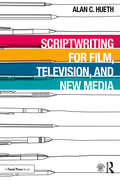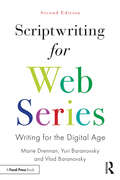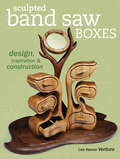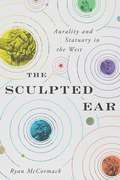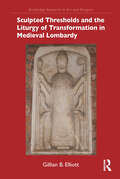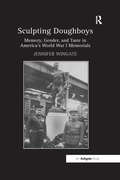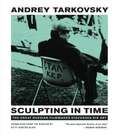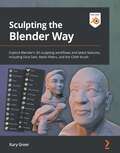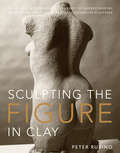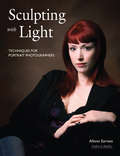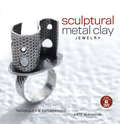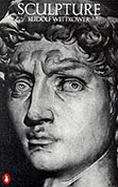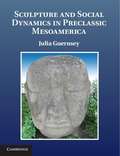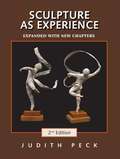- Table View
- List View
Script Supervising and Film Continuity
by Pat P MillerThis definitive handbook explains how a script is transformed into a motion picture or television program. Readers will learn the methodology and craft of the script supervisor, who ensures that the continuity of a film, its logical progression, is coherent. The book teaches all vital script supervising functions, including how to: .prepare, or "break down" a script for shooting .maintaining screen direction and progression .matching scenes and shots for editing .cuing actors .recording good takes and prints preparing time and log sheets for editingThis revision of an industry classic has been updated to reflect changes in the film industry in recent years, including the use of electronic media in the script supervisor's tasks. While it is written for the novice script writer, it can serve as a valuable resource for directors, film editors, scriptwriters and cinematographers.
Script Tease: Today's Hottest Screenwriters Bare All
by Dylan CallaghanThe Newest Screenwriting SecretsWhat do an erstwhile stripper, an ex–gambling addict, and a stoned Canadian teenager have in common? They wrote your favorite movies, and they're not who you'd expect.Diablo Cody (Juno), Darren Aronofsky (The Wrestler), and Seth Rogan (Superbad) are among the scribes interviewed in Script Tease, your main line to the most current screenwriting wisdom. Their funny, even touching tales of how they made it despite the odds will give you a revealing look into what it really takes to get into the industry.With the guidance of recent greats like Aaron Sorkin (The Social Network) and the Coen Brothers (True Grit), you will learn how to hone your craft and make it in an industry where only the best succeed.
Scripted Affects, Branded Selves: Television, Subjectivity, and Capitalism in 1990s Japan
by Gabriella LukácsIn Scripted Affects, Branded Selves, Gabriella Lukcs analyzes the development of a new primetime serial called "trendy drama" as the Japanese television industry's ingenious response to market fragmentation. Much like the HBO hit Sex and the City, trendy dramas feature well-heeled young sophisticates enjoying consumer-oriented lifestyles while managing their unruly love lives. Integrating a political-economic analysis of television production with reception research, Lukcs suggests that the trendy drama marked a shift in the Japanese television industry from offering story-driven entertainment to producing lifestyle-oriented programming. She interprets the new televisual preoccupation with consumer trends not as a sign of the medium's downfall, but as a savvy strategy to appeal to viewers who increasingly demand entertainment that feels more personal than mass-produced fare. After all, what the producers of trendy dramas realized in the late 1980s was that taste and lifestyle were sources of identification that could be manipulated to satisfy mass and niche demands more easily than could conventional marketing criteria such as generation or gender. Lukcs argues that by capitalizing on the semantic fluidity of the notion of lifestyle, commercial television networks were capable of uniting viewers into new affective alliances that, in turn, helped them bury anxieties over changing class relations in the wake of the prolonged economic recession.
Scripting Cultures
by Mark BurryWith scripting, computer programming becomes integral to the digital design process. It provides unique opportunities for innovation, enabling the designer to customise the software around their own predilections and modes of working. It liberates the designer by automating many routine aspects and repetitive activities of the design process, freeing-up the designer to spend more time on design thinking. Software that is modified through scripting offers a range of speculations that are not possible using the software only as the manufacturers intended it to be used. There are also significant economic benefits to automating routines and coupling them with emerging digital fabrication technologies, as time is saved at the front-end and new file-to-factory protocols can be taken advantage of. Most significantly perhaps, scripting as a computing program overlay enables the tool user (designer) to become the new tool maker (software engineer). Though scripting is not new to design, it is only recently that it has started to be regarded as integral to the designer's skill set rather than a technical speciality. Many designers are now aware of its potential, but remain hesitant. This book treats scripting not only as a technical challenge, requiring clear description, guidance and training, but also, and more crucially, answers the question as to why designers should script in the first place, and what the cultural and theoretical implications are.This book:Investigates the application of scripting for productivity, experimentation and design speculation.Offers detailed exploration of the scripting of Gaudí's final realised design for the Sagrada Família, leading to file-to-factory digital fabrication.Features projects and commentary from over 30 contemporary scripting leaders, including Evan Douglis, Marc Fornes, Sawako Kaijima, Achim Menges, Neri Oxman, Casey Reas and Hugh Whitehead of Foster + Partners.
Scripting Hitchcock: Psycho, The Birds, and Marnie
by Walter Srebnick Walter RaubicheckNominated for a nonfiction Edgar Allan Poe Award from the Mystery Writers of America, Scripting Hitchcock explores the collaborative process between Alfred Hitchcock and the screenwriters he hired to write the scripts for three of his greatest films: Psycho, The Birds, and Marnie. Drawing from extensive interviews with the screenwriters and other film technicians who worked for Hitchcock, Walter Raubicheck and Walter Srebnick illustrate how much of the filmmaking process took place not on the set or in front of the camera, but in the adaptation of the sources, the mutual creation of plot and characters by the director and the writers, and the various revisions of the written texts of the films. Hitchcock allowed his writers a great deal of creative freedom, which resulted in dynamic screenplays that expanded traditional narrative and defied earlier conventions. Critically examining the question of authorship in film, Raubicheck and Srebnick argue that Hitchcock did establish visual and narrative priorities for his writers, but his role in the writing process was that of an editor. While the writers and their contributions have generally been underappreciated, this study reveals that all the dialogue and much of the narrative structure of the films were the work of screenwriters Jay Presson Allen, Joseph Stefano, and Evan Hunter. The writers also shaped American cultural themes into material specifically for actors such as Janet Leigh, Tippi Hedren, and Tony Perkins. This volume gives due credit to those writers who gave narrative form to Hitchcock's filmic vision.
Scripting Media
by Frank Barnas Marie BarnasBringing together professional standards, practices, and jargon from across the industry, Scripting Media provides a complete overview of writing for divergent forms of media. While some forms of media writing have been honed and standardized over generations, others demand new ways of thinking and collaborating. Covering traditional forms of scriptwriting, such as news, advertising, and film scripting, as well as newer and more emerging areas of social media and virtual reality, this book is designed to prepare readers for the varying formats, styles, and techniques specific to each medium. Each chapter contains a list of key terms, an historical overview of the area, and technical specifications for students to be aware of. Exercises, essay prompts, and online links help reinforce students’ knowledge and provide avenues for private study. Written in an accessible and engaging style by two renowned media practitioners, authors, and teachers, Scripting Media is essential reading for students approaching media writing for the first time.
Scripting Media
by Frank Barnas Marie BarnasBringing together professional standards, practices, and jargon from across the industry, Scripting Media provides a complete overview of writing for divergent forms of media.While some forms of media writing have been honed and standardized over generations, others demand new ways of thinking and collaborating. Covering traditional forms of scriptwriting, such as news, advertising, and film scripting, as well as newer and more emerging areas of social media and virtual reality, this book is designed to prepare readers for the varying formats, styles, and techniques specific to each medium. Each chapter contains a list of key terms, an historical overview of the area, and technical specifications for students to be aware of. Exercises, essay prompts, and online links help reinforce students’ knowledge and provide avenues for private study.Written in an accessible and engaging style by two renowned media practitioners, authors, and teachers, Scripting Media is essential reading for students approaching media writing for the first time.
Scripting the Environment: Oil, Democracy and the Sands of Time and Space (Palgrave Studies in Media and Environmental Communication)
by Geo TakachThis volume explores how to engage audiences both beyond and within the academy more deeply in environmental research through arts-based forms. It builds on a multi-pronged case study of scripts for documentary film, audio-visual and stage formats, focusing on how the identity of a place is constructed and contested in the face of environmental concerns around fossil-fuel extraction in a globalized, visual society--and specifically on the rising, international public-relations war over Alberta’s stewardship of the tar sands. Each script is followed by discussion of the author’s choices of initiating idea, research sources, format, voices, world of the story, structure and visual style, and other notes on the convergence of synthesis, analysis and (re)presentation in the script. Included are lively analysis and commentary on screenwriting and playwriting theory, the creation and dissemination of the scripts, and reflections to ground a proposed framework for writing eco-themed scripts for screen, audio-visual and stage formats.
Scripts of Blackness: Early Modern Performance Culture and the Making of Race (RaceB4Race: Critical Race Studies of the Premodern)
by Noémie NdiayeScripts of Blackness shows how the early modern mass media of theatre and performance culture at-large helped turn blackness into a racial category, that is, into a type of difference justifying emerging social hierarchies and power relations in a new world order driven by colonialism and capitalism.In this book, Noémie Ndiaye explores the techniques of impersonation used by white performers to represent Afro-diasporic people in England, France, and Spain in the sixteenth and seventeenth centuries, using a comparative and transnational framework. She reconstructs three specific performance techniques—black-up (cosmetic blackness), blackspeak (acoustic blackness), and black dances (kinetic blackness)—in order to map out the poetics of those techniques, and track a number of metaphorical strains that early modern playtexts regularly associated with them. Those metaphorical strains, the titular scripts of blackness of this book, operated across national borders and constituted resources, as they provided spectators and participants with new ways of thinking about the Afro-diasporic people who lived or could/would ultimately live in their midst.Those scripts were often gendered and hinged on notions of demonization, exclusion, exploitation, animalization, commodification, sexualization, consensual enslavement, misogynoir, infantilization, and evocative association with other racialized minorities. Scripts of Blackness attempts to grasp the stories that Western Europeans told themselves through performative blackness, and the effects of those fictions on early modern Afro-diasporic subjects.
Scriptwriting for Film, Television and New Media
by Alan C. HuethWhat are the foundations of scriptwriting? Why do some scripts gain more prestige than others? How do you write a script and get it noticed? Scriptwriting for Film, Television and New Media answers these questions and more, offering a comprehensive introduction to writing scripts for film, television, the Internet, and interactive multimedia. Author Alan C. Hueth explains not just how to write, but how to think and apply the fundamental principles of screenwriting to multiple platforms and genres. This includes chapters on numerous script formats, including drama and comedy in film and TV, short films, commercials and PSAs, news and sports, interview shows, documentaries, reality shows, and corporate and educational media, including interactive multimedia. This book also addresses legal and ethical issues, how to become a professional scriptwriter, and a section on production language that provides helpful explanations of how camera, locations, visual and audio effects combine on screen to engage and sustain viewer attention, and, consequently, how to improve scriptwriting technique. The book features numerous case studies and detailed examples, including chapter by chapter exercises, plot diagrams, quick-look and learn tables that assist readers to quickly understand genre related script elements, and in-depth script close-ups to examine precisely how writers utilize the principles and elements of drama to create a successful script. It is also supported by a comprehensive companion website with further case studies, assignments, video clips, and examples of films and programs discussed in the book. Scriptwriting for Film, Television, and New Media is ideal for aspiring scriptwriters and anyone wanting to broaden their understanding of how successful scripts are created.
Scriptwriting for Web Series: Writing for the Digital Age
by Marie Drennan Yuri Baranovsky Vlad BaranovskyScriptwriting for Web Series: Writing for the Digital Age offers aspiring writers a comprehensive how-to guide to scriptwriting for web series in the digital age. Containing in-depth advice on writing both short- and long-form webisodes as part of a series, as well as standalone pieces, it goes beyond the screenwriting process to discuss production, promotion and copyright in order to offer a well-rounded guide to creating and distributing a successful web series. Written in a friendly, readable and jargon-free style by an experienced scriptwriting professor and two award-winning web series creators, it offers invaluable professional insights, as well as examples from successful series, sample scripts and interviews with key series creators, writers and industry professionals.
Sculpted Band Saw Boxes: Design, Inspiration & Construction
by Lois VenturaThinking inside the box!Making band saw boxes allows woodworkers creativity that just can't be found in other types of woodworking. Of the band-saw box builders working today, few can claim the sculpted artistry of Lois Ventura's work.With Sculpted Band Saw Boxes you'll find step-by-step instructions for nine new designs, patterns for another 20 band saw box projects, plus a stunning gallery of Ventura's boxes guaranteed to inspire you to stretch your creative muscles and create your own original box designs.
The Sculpted Ear: Aurality and Statuary in the West (Perspectives on Sensory History #2)
by Ryan McCormackSound and statuary have had a complicated relationship in Western aesthetic thought since antiquity. Taking as its focus the sounding statue—a type of anthropocentric statue that invites the viewer to imagine sounds the statue might make—Sculpted Ears rethinks this relationship in light of discourses on aurality emerging within the field of sound studies. Ryan McCormack argues that the sounding statue is best thought of not as an aesthetic object but as an event heard by people and subsequently conceptualized into being through acts of writing and performance.Constructing a history in which hearing plays an integral role in ideas about anthropocentric statuary, McCormack begins with the ancient sculpture of Laocoön, before moving to a discussion of the early modern automaton known as Tipu’s Tiger and the statue of the Commendatore in Mozart’s Don Giovanni. Finally, he examines statues of people from the present and the past, including the singer Josephine Baker, the violinist Aleksandar Nikolov, and the actor Bob Newhart—with each case touching on some of the issues that have historically plagued the aesthetic viability of the sounding statue. McCormack convincingly demonstrates how sounding statues served as important precursors and continuing contributors to modern ideas about the ontology of sound, technologies of sound reproduction, and performance practices blurring traditional divides between music, sculpture, and the other arts.A compelling narrative that illuminates the stories of individual sculptural objects and the audiences that hear them, this book will appeal to anyone interested in the connections between aurality and statues in the Western world, in particular scholars and students of sound studies and sensory history.
The Sculpted Ear: Aurality and Statuary in the West (Perspectives on Sensory History)
by Ryan McCormackSound and statuary have had a complicated relationship in Western aesthetic thought since antiquity. Taking as its focus the sounding statue—a type of anthropocentric statue that invites the viewer to imagine sounds the statue might make—The Sculpted Ear rethinks this relationship in light of discourses on aurality emerging within the field of sound studies. Ryan McCormack argues that the sounding statue is best thought of not as an aesthetic object but as an event heard by people and subsequently conceptualized into being through acts of writing and performance.Constructing a history in which hearing plays an integral role in ideas about anthropocentric statuary, McCormack begins with the ancient sculpture of Laocoön before moving to a discussion of the early modern automaton known as Tipu’s Tiger and the statue of the Commendatore in Mozart’s Don Giovanni. Finally, he examines statues of people from the present and the past, including the singer Josephine Baker, the violinist Aleksandar Nikolov, and the actor Bob Newhart—with each case touching on some of the issues that have historically plagued the aesthetic viability of the sounding statue. McCormack convincingly demonstrates how sounding statues have served as important precursors and continuing contributors to modern ideas about the ontology of sound, technologies of sound reproduction, and performance practices blurring traditional divides between music, sculpture, and the other arts.A compelling narrative that illuminates the stories of individual sculptural objects and the audiences that hear them, this book will appeal to anyone interested in the connections between aurality and statues in the Western world, in particular scholars and students of sound studies and sensory history.
Sculpted Thresholds and the Liturgy of Transformation in Medieval Lombardy (Routledge Research in Art and Religion)
by Gillian B. ElliottThis book explores the issue of ecclesiastical authority in Romanesque sculpture on the portals and other sculpted “gateways” of churches in the north Italian region of Lombardy. Gillian B. Elliott examines the liturgical connection between the ciborium over the altar (the most sacred threshold inside the church), and the sculpted portals that appeared on church exteriors in medieval Lombardy. In cities such as Milan, Civate, Como, and Pavia, the liturgy of Saint Ambrose was practiced as an alternative to the Roman liturgy and the churches were constructed to respond to the needs of Ambrosian liturgy. Not only do the Romanesque churches in these places correspond stylistically and iconographically, but they were also linked politically in an era of intense struggle for ultimate regional authority. The book considers liturgical and artistic links between interior church furnishings and exterior church sculptural programs, and also applies new spatial methodologies to the interior and exterior of churches in Lombardy. The book will be of interest to scholars working in art history, medieval studies, architectural history, and religious studies.
Sculpted Thresholds and the Liturgy of Transformation in Medieval Lombardy (Routledge Research in Art and Religion)
by Gillian B. ElliottThis book explores the issue of ecclesiastical authority in Romanesque sculpture on the portals and other sculpted “gateways” of churches in the north Italian region of Lombardy. Gillian B. Elliott examines the liturgical connection between the ciborium over the altar (the most sacred threshold inside the church), and the sculpted portals that appeared on church exteriors in medieval Lombardy. In cities such as Milan, Civate, Como, and Pavia, the liturgy of Saint Ambrose was practiced as an alternative to the Roman liturgy and the churches were constructed to respond to the needs of Ambrosian liturgy. Not only do the Romanesque churches in these places correspond stylistically and iconographically, but they were also linked politically in an era of intense struggle for ultimate regional authority. The book considers liturgical and artistic links between interior church furnishings and exterior church sculptural programs, and also applies new spatial methodologies to the interior and exterior of churches in Lombardy. The book will be of interest to scholars working in art history, medieval studies, architectural history, and religious studies.
Sculpting Doughboys: Memory, Gender, and Taste in America's World War I Memorials
by Jennifer WingateRedressing the neglect of World War I memorials in art history scholarship and memory studies, Sculpting Doughboys considers the hundreds of sculptures of American soldiers that dominated the nation's sculptural commemorative landscape after World War I. To better understand these 'doughboys', the name given to both members of the American Expeditionary Forces and the memorials erected in their image, this volume also considers their sculptural alternatives, including depictions of motherhood, nude male allegories, and expressions of anti-militarism. It addresses why doughboy sculptures came to occupy such a significant presence in interwar commemoration, even though art critics objected to their unrefined realism, by considering the social upheavals of the Red Scare, America's burgeoning consumer and popular culture, and the ambitions and idiosyncrasies of artists and communities across the country. In doing so, this study also highlights the social and cultural tensions of the period as debates grew over art's changing role in society and as more women and immigrant sculptors vied for a place and a voice in America's public sphere. Finally, Sculpting Doughboys addresses the fate of these memorials nearly a century after they were dedicated and poses questions for reframing our relationship with war memorials today.
Sculpting in Time: Reflections on the Cinema
by Andrey Tarkovsky Kitty Hunter-BlairAndrey Tarkovsky, the genius of modern Russian cinema—hailed by Ingmar Bergman as "the most important director of our time"—died an exile in Paris in December 1986. In Sculpting in Time, he has left his artistic testament, a remarkable revelation of both his life and work. Since Ivan's Childhood won the Golden Lion at the Venice Film Festival in 1962, the visionary quality and totally original and haunting imagery of Tarkovsky's films have captivated serious movie audiences all over the world, who see in his work a continuation of the great literary traditions of nineteenth-century Russia. Many critics have tried to interpret his intensely personal vision, but he himself always remained inaccessible. In Sculpting in Time, Tarkovsky sets down his thoughts and his memories, revealing for the first time the original inspirations for his extraordinary films—Ivan's Childhood, Andrey Rublyov, Solaris, The Mirror, Stalker, Nostalgia, and The Sacrifice. He discusses their history and his methods of work, he explores the many problems of visual creativity, and he sets forth the deeply autobiographical content of part of his oeuvre—most fascinatingly in The Mirror and Nostalgia. The closing chapter on The Sacrifice, dictated in the last weeks of Tarkovsky's life, makes the book essential reading for those who already know or who are just discovering his magnificent work.
Sculpting the Blender Way: Explore Blender's 3D sculpting workflows and latest features, including Face Sets, Mesh Filters, and the Cloth brush
by Xury GreerGet started with the latest sculpting features in Blender 3D and learn key sculpting workflows such as Dynotopo, Voxel Remesher, QuadriFlow, and MultiresolutionKey FeaturesUse Blender's core sculpting workflows: basic sculpting, Dynotopo, Voxel Remesher, QuadriFlow, and MultiresolutionLearn how to use and customize Blender's sculpting brushes to create fantastic art effortlesslyExplore common techniques in Blender 3.0 for creating facial features, clothing, accessories, and moreBook DescriptionBlender 3D is a free and open source program that can be used for every part of the 3D production pipeline. It has several robust feature sets for creating 3D art that have contributed to its rising popularity in the last few years. Sculpting is perhaps the most enjoyable and artistic method for creating 3D art as it relies less on technical knowledge and focuses on artistic brushes. The latest release of Blender makes the sculpting feature set more powerful than ever, so now is an excellent time to learn it! This book covers the expansive list of features in the Blender 2.93 LTS release, as well as the exciting all-new Blender 3.0 release. This book will be an excellent resource for professionals who need a production-ready long-term support release of the software, as well as hobbyists looking for a cutting-edge experience.Sculpting the Blender Way will demonstrate how to navigate Blender's user interface and take you through the core workflows. You'll gain a detailed understanding of how the sculpting features work, including basic sculpting, Dyntopo, the Voxel Remesher, QuadriFlow, and Multiresolution. This Blender book will cover a wide range of brushes, as well as all of the latest additions to the sculpting feature set, such as Face Sets, Mesh Filters, and the Cloth brush. You'll learn how to customize these brushes and features to create fantastic 3D sculptures that you can share with the ever-growing Blender community.By the end of this book, you'll have gained a complete understanding of the core sculpting workflows and be able to use Blender to bring your digital characters to life.What you will learnConfigure your graphics tablet for use in 3D sculptingSet up Blender's user interface for sculptingUnderstand the core sculpting workflowsGet the hang of using Blender's basic sculpting brushesCustomize brushes for more advanced workflowsExplore high-resolution details with brush alphas and MultiresolutionTry out the all-new Cloth brushRender your finished artwork for your portfolioWho this book is forThis book is for artists who want to get started with the exciting new sculpting features in Blender 3D. Whether you have experience using ZBrush or traditional sculpting, or are completely new to sculpting, this book will have something new for you to learn. Prior experience with Blender or other 3D software may be helpful but is not required. However, a graphics tablet from Wacom, XP-Pen, or Huion is highly recommended to be able to follow along the concepts and examples covered in the book.
Sculpting the Figure in Clay: An Artistic and Technical Journey to Understanding the Creative and Dynamic Forces in Figurative Sculpture
by Peter RubinoA comprehensive guide for sculptors looking to recreate the human body using clay, from the author of The Portrait in ClayIn Sculpting the Figure in Clay, acclaimed portrait bust sculptor Peter Rubio teaches a master class in the essentials of figurative sculpture. In this intensive, all-inclusive guide, he introduces students to a natural, straightforward geometry that will help them become masters at forming figures of clay. Rubino&’s unique approach utilizes a geometric system consisting of blocks, simple shapes, and guidelines that instruct students in a new and instinctive sculptural style, With these easy-to-follow instructions and informative concepts, students will see figures as the basic shapes beneath the form as well as learn vital approaches such as BLT: Bend, Lean, and Turn, to create evocative expression, and the Three Ps: Position, Proportion, and Plans, for accurate representation. Other topics include:• The Fundamentals of the Clay Torso• Observing the Model• Essential Materials and Tools• Sculpting the Female Torso from the Live Model• Sculpting the Reclining Figure from the Live Model• Sculpting the Hand, Foot, and Lower Arm• Plus Many Photographic Reference Poses for Continued Study This unparalleled resource is the definitive guide to figurative sculpture.
Sculpting with Light
by Allison EarnestTechniques for creating flawless lighting show photographers of all levels how to take full control of their photographic atmosphere in this indispensable guide. Illustrating the physics that govern light; the visual difference between the eye and camera; the qualities of incident and reflected light; and the effects of the size, intensity, direction, contrast, and ratio of light, this manual offers tools for sculpting the face for remarkable portraits. The three desirable positions for the main light are described in detail, as well as how to use those arrangements to accentuate all types of faces-oval, long, angular, heart-shaped, and square-to create portraits with a variety of different effects, from romantic to edgy to high fashion.
Sculptural Metal Clay Jewelry: Techniques and Explorations
by Kate MckinnonBeginning with an overview of the properties of metal clay, including safety information and metalsmithing terms, this thorough resource offers detailed procedures for creating a variety of components, settings, findings, attachments, 3-D forms, and textured effects. Each technique is shown with step-by-step photography to make it easy for jewelry makers at the advanced beginner to intermediate levels to learn the art of metal clay. The 12 unique projects within have multiple components made from metal clay, including clasps, chains, and settings; moveable and removable pieces; unusual textures and patinas; and unique construction and engineering. Creative tips on incorporating beads are also included. This handbook offers jewelry artists the design inspiration needed to create gallery-level pieces that are truly wearable art.
Sculpture: Processes and Principles
by Rudolf WittkowerThis book studies what unites and separates sculptors across the centuries. It looks at the masters of Archaic Greece, the Middle Ages, through the great names of Michelangelo, Cellini and Bernini to Rodin, Brancusi and Henry Moore. By studying their working methods and techniques, the author discloses their artistic ideas and convictions, thereby opening up new avenues of approach for the spectator.
Sculpture and Social Dynamics in Preclassic Mesoamerica
by Julia GuernseyThis book examines the functions of sculpture during the Preclassic period in Mesoamerica and its significance in statements of social identity. Julia Guernsey situates the origins and evolution of monumental stone sculpture within a broader social and political context and demonstrates the role that such sculpture played in creating and institutionalizing social hierarchies. This book focuses specifically on an enigmatic type of public, monumental sculpture known as the "potbelly" that traces its antecedents to earlier, small domestic ritual objects and ceramic figurines. The cessation of domestic rituals involving ceramic figurines along the Pacific slope coincided not only with the creation of the first monumental potbelly sculptures, but with the rise of the first state-level societies in Mesoamerica by the advent of the Late Preclassic period. The potbellies became central to the physical representation of new forms of social identity and expressions of political authority during this time of dramatic change.
Sculpture as Experience
by Judith PeckSculpture as Experience 2nd Edition explores the freedoms and possibilities inherent in sculpture. Beginning with exercises in seeing and drawing for beginners and experienced artists alike, Dr. Judith Peck goes on to describe different approaches to creating sculpture, including both aesthetic and practical methods for working with a wide range of media. The expanded second edition includes: Six new chapters devoted to paper productions, foam core fabrications, wood constructions, sand sculpture, project preservations and patina, and mounting 200 color photos to encourage individual creativity and provide inspiration In-depth instructions demonstrating techniques for working with found objects, clay, foil and pariscraft, wax, wire, plaster and cement and vermiculite Checklists of tools and materials needed for each medium and technique Generously illustrated in color with student work and the author's own art, Sculpture as Experience 2nd Edition will broaden the definition of what sculpture is and help the individual sculptor find his or her medium.
